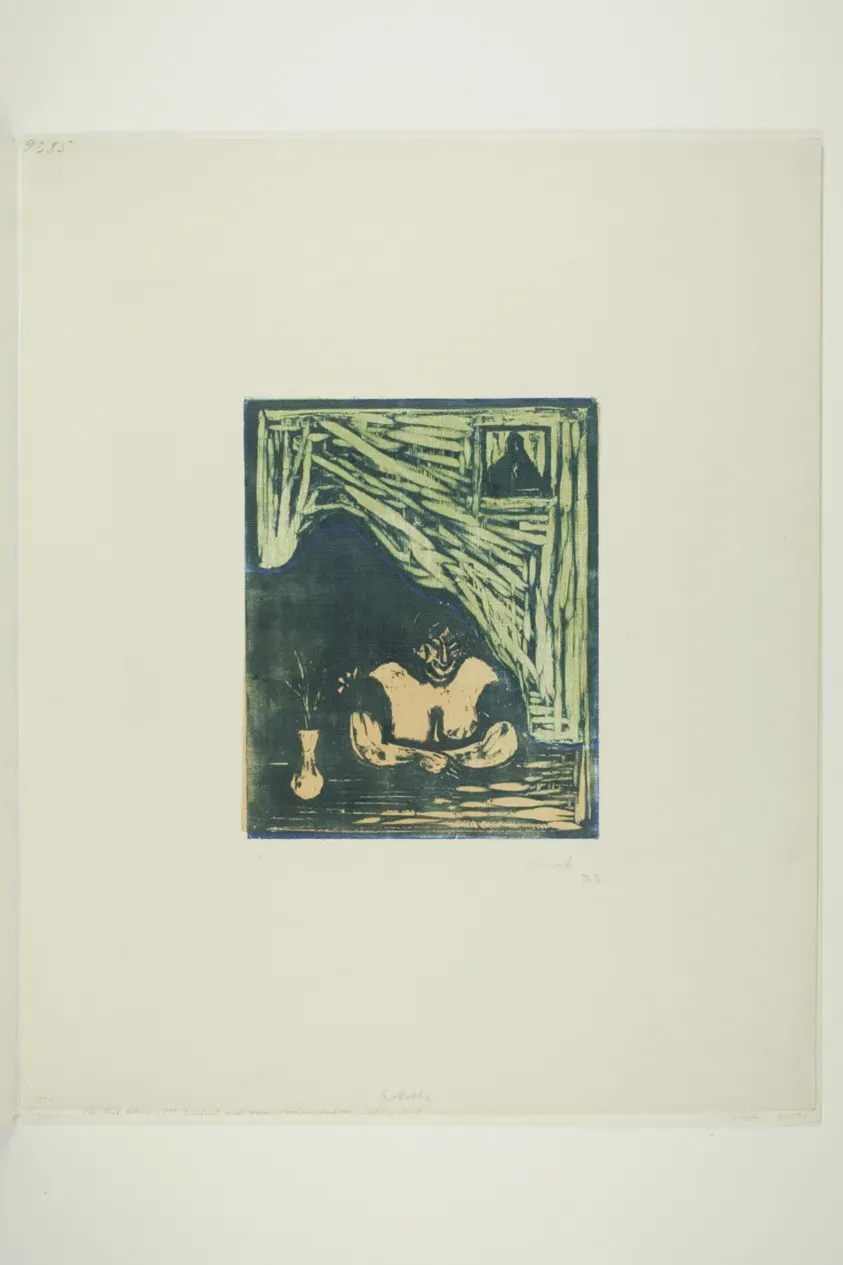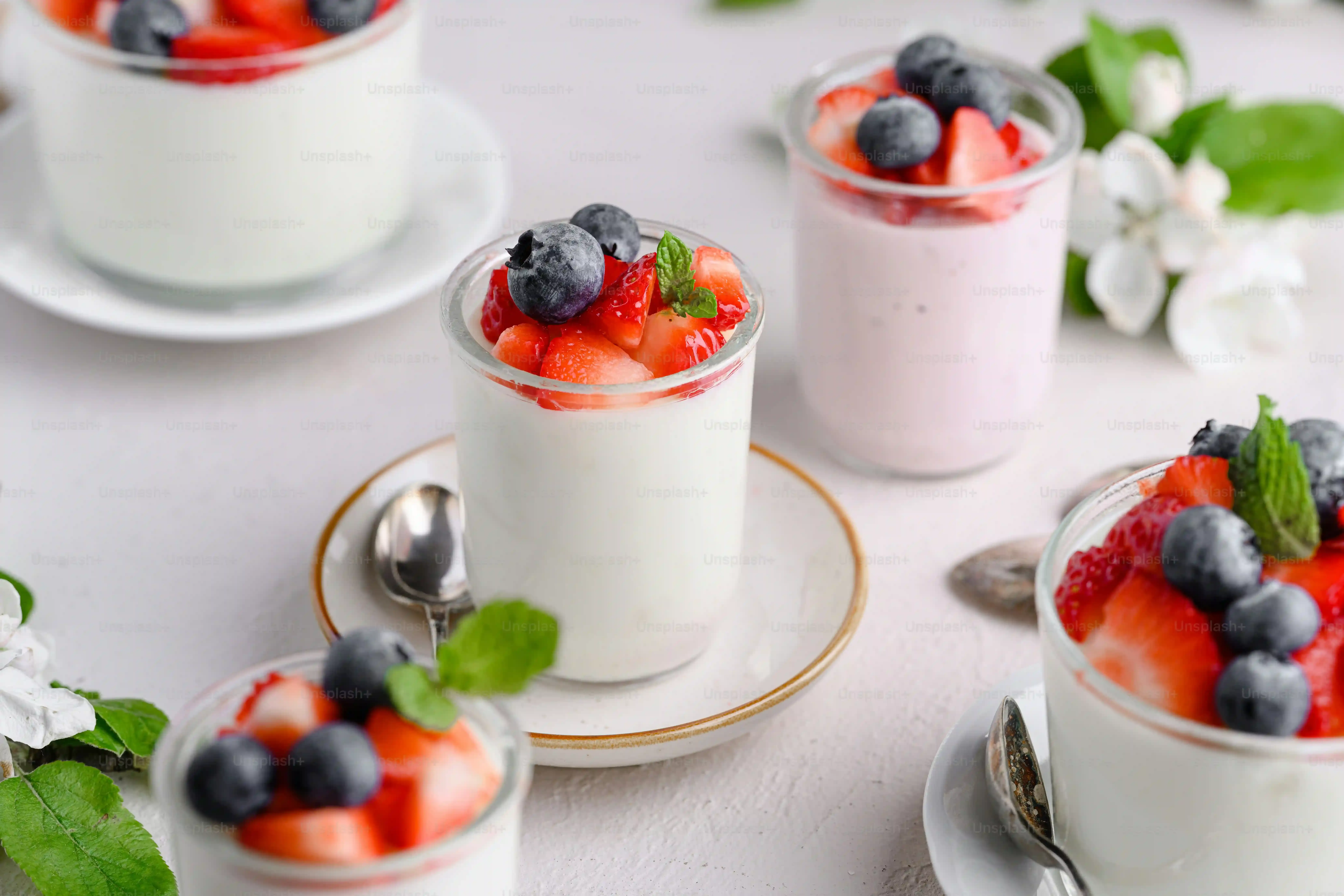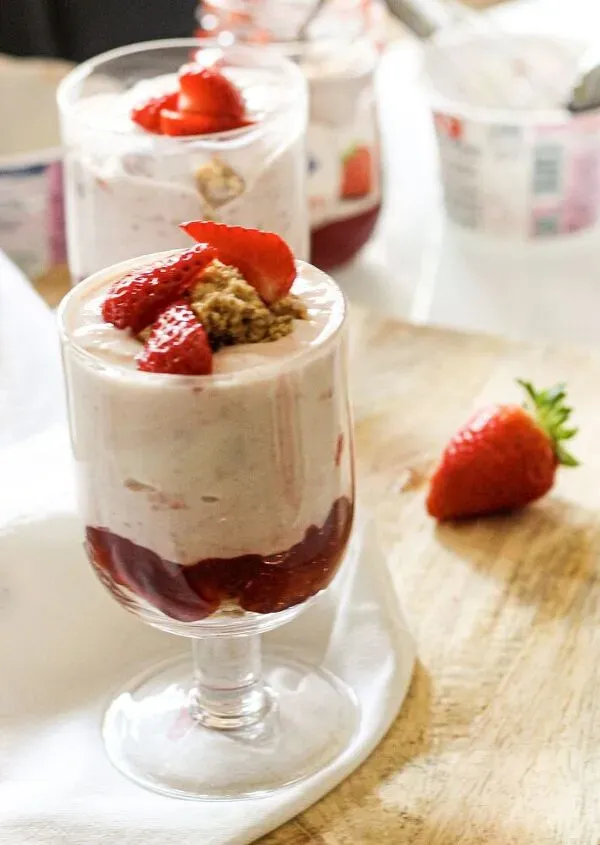Table of Contents
Tired of shelling out cash for those small tubs of non fat yogurt at the grocery store, only to wonder what mystery ingredients are lurking inside? Or maybe you just can't find one that hits the right texture or tang? You're not alone. The world of store-bought yogurt can feel like a gamble. But what if I told you there's a ridiculously easy way to get exactly what you want, every single time? We're talking about mastering a simple non fat yogurt recipe right in your own kitchen.
Why bother with a non fat yogurt recipe?

Why bother with a non fat yogurt recipe?
Control What Goes In
Let's be real, scanning the ingredient list on a store-bought yogurt can feel like reading a chemistry textbook. Thickeners, stabilizers, artificial flavors – you name it, it's probably in there. When you make your own non fat yogurt recipe at home, you know exactly what's going into your body. It's just milk and live active cultures. That's it. No weird gums, no added sugar unless you put it there yourself, just pure, simple goodness. This control is a big deal, especially if you're trying to avoid specific additives or manage your sugar intake.
Save Your Wallet (Seriously)
Have you seen the price of those small individual yogurt cups lately? It adds up fast. Making a large batch of non fat yogurt from a gallon of milk is significantly cheaper per serving. The initial investment in cultures is minimal, and milk is a staple most people buy anyway. Over time, the savings are substantial. Think about all the other things you could spend that money on – better ingredients for topping your yogurt, maybe? Or just pocketing the difference. That's a compelling reason right there to explore a non fat yogurt recipe.
So, why exactly bother with a non fat yogurt recipe?
- You dictate the ingredients list.
- No mysterious additives or fillers.
- Significant cost savings over time.
- Fresher product with better flavor potential.
- Customize the texture and tang to your liking.
Gathering your gear for homemade non fat yogurt

Gathering your gear for homemade non fat yogurt
Alright, so you're convinced making your own is the way to go. Good choice. Now, let's talk about getting your kitchen ready for your first non fat yogurt recipe adventure. You don't need a ton of fancy equipment; most of what you need you probably already have kicking around. We're not talking about setting up a sterile lab here, just gathering a few key items to make the process smooth and successful. Think of it as assembling your toolkit for delicious, homemade goodness. Getting this right is the first physical step in your journey to mastering that perfect non fat yogurt recipe.
The simple stepbystep non fat yogurt recipe

The simple stepbystep non fat yogurt recipe
Heating the Milk Just Right
you've got your pot, your thermometer, and your milk. The very first step in this non fat yogurt recipe journey is heating the milk. You need to bring it up to a specific temperature – typically around 180°F (82°C). Why so hot? This kills off any competing bacteria hanging out in the milk that could mess with your yogurt culture. It also changes the protein structure slightly, which helps give your yogurt a thicker texture. Pour your non-fat milk into your pot, place it over medium heat, and stir it occasionally so it doesn't scorch on the bottom. Keep a close eye on that thermometer.
Cooling and Culturing Time
Once your milk hits that 180°F mark, pull it off the heat immediately. Now comes the crucial cooling part of this simple step-by-step non fat yogurt recipe. You need to let it cool down significantly, all the way to between 110-115°F (43-46°C). This is the sweet spot for your yogurt culture; too hot and you'll kill them, too cold and they won't activate properly. This is where a good thermometer is your best friend. While it's cooling, grab your starter culture – a few tablespoons of plain, store-bought yogurt with live active cultures or a packet of freeze-dried starter. Once the milk is at the right temperature, gently whisk in your starter until it's fully dissolved and evenly distributed. Don't rush this part.
- Heat milk to 180°F (82°C).
- Stir to prevent scorching.
- Cool milk to 110-115°F (43-46°C).
- Whisk in yogurt starter culture.
- Ensure culture is fully dissolved.
Troubleshooting your non fat yogurt recipe: What went wrong?

Troubleshooting your non fat yogurt recipe: What went wrong?
Why is my yogurt thin?
So, you followed the non fat yogurt recipe steps, waited patiently, and opened the incubation container expecting thick, creamy goodness, but instead, you've got something closer to milk? Yeah, that's frustrating. The most common culprit for thin yogurt is temperature. Either your milk wasn't heated high enough initially to denature proteins and kill off competing bacteria, or it was too hot when you added the starter culture, killing those precious little guys before they could get to work. Another reason could be the incubation temperature wasn't consistent or warm enough. Yogurt needs a steady temperature between 110-115°F (43-46°C) to culture properly. If it dips too low, the bacteria slow down or stop working.
Other common hiccups and how to fix them
Thinness isn't the only potential pitfall in your non fat yogurt recipe journey. Sometimes you get an off flavor, maybe a bit bitter or weirdly tangy. This can happen if your equipment wasn't perfectly clean, introducing unwanted bacteria. It could also mean your culture wasn't active, or the incubation time was too long, leading to over-fermentation. If your yogurt didn't thicken at all, it's almost certainly a problem with the starter culture – either it wasn't live, you didn't use enough, or the temperature was way off when you added it. Always check the expiration date on your starter and make sure the store-bought yogurt you use says "contains live active cultures" on the label. Don't use that sugary, fruit-on-the-bottom stuff as a starter; the sugar can interfere.
Problem | Likely Cause | Fix/Prevention |
|---|---|---|
Thin/Runny Yogurt | Incubation temp too low/inconsistent, milk not heated high enough, starter killed by heat. | Use a reliable incubator (oven with light on, yogurt maker), heat milk to 180°F, cool to 110-115°F before adding starter. |
No Thickening | Inactive or insufficient starter culture, temp too low/high when adding starter. | Ensure starter is fresh and active, use correct temperature range (110-115°F), use recommended amount of starter. |
Off Flavors (Bitter/Weird) | Contaminated equipment, over-incubation, inactive culture. | Sanitize all equipment thoroughly, don't incubate for excessively long periods (8-12 hours usually enough), use fresh, active starter. |
Beyond the bowl: Creative uses for your non fat yogurt

Beyond the bowl: Creative uses for your non fat yogurt
Give savory dishes a healthy upgrade
so you've got a big batch of your glorious homemade non fat yogurt. Eating it plain is fine, but let's be honest, that gets old fast. Thinking beyond breakfast opens up a whole world of possibilities. This stuff is a fantastic substitute in savory cooking. Need a creamy base for a soup or sauce? Whisk in some yogurt instead of heavy cream. Making a marinade for chicken or fish? Yogurt tenderizes beautifully and adds a tangy depth. Swap sour cream or mayo in dips – think lighter ranch, onion dip, or a tzatziki that won't weigh you down. It brings acidity and creaminess without all the fat.
I once swapped out the mayo in a chicken salad for non fat yogurt, and my lunch guests didn't even notice until I told them. They just commented on how "fresh" it tasted. Little did they know, it was also significantly healthier. It’s about smart swaps that don't sacrifice flavor or texture, proving your non fat yogurt recipe is more versatile than you might think.
Sweet swaps and dessert delights
On the sweeter side, your non fat yogurt is a natural fit. Forget those sugary, artificially flavored parfaits from the store. Layer your homemade goodness with fresh fruit, granola, or a drizzle of honey for a breakfast or snack that actually feels like a treat. Blend it into smoothies for extra protein and thickness. You can even use it in baking to add moisture and a slight tang to muffins, cakes, or quick breads, often replacing some of the oil or butter. It works surprisingly well in cheesecakes too, creating a lighter version that still feels decadent.
Ever tried making frozen yogurt popsicles? Just add some fruit puree or juice to your non fat yogurt and freeze. Kids love them, and you know exactly what's in them – a far cry from the neon-colored sugar bombs in the freezer aisle. It’s a simple way to turn your basic non fat yogurt recipe output into something fun and healthy.
- Use as a base for creamy salad dressings.
- Substitute for sour cream in tacos or baked potatoes.
- Create lighter dips and spreads.
- Blend into smoothies for protein boost.
- Mix with fruit and granola for parfaits.
- Use in baking as a fat or dairy substitute.
- Make healthy frozen yogurt treats.
Wrapping Up Your Non Fat Yogurt Journey
So there you have it. You've navigated the simple steps, potentially dodged a few curdling disasters (it happens, don't sweat it), and now you have a batch of fresh, homemade non fat yogurt sitting in your fridge. No weird thickeners, no excessive sugar, just pure, tangy goodness you made yourself. It's a small win, sure, but knowing exactly what went into your breakfast or snack feels pretty good, right? Plus, you just saved yourself a few bucks and a trip to the store. Go ahead, give yourself a pat on the back. Now, the real fun begins – figuring out all the delicious ways you're going to use it.
